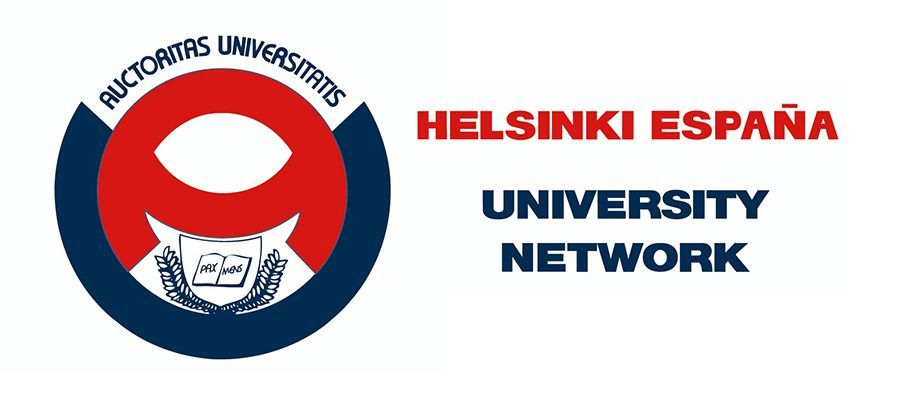Ganadores del concurso (2024)

Marta Vega Zájara
Universidad Pablo de Olavide (Sevilla)
Me llamo Marta Vega Zájara y actualmente me encuentro en el último paso para finalizar un doble grado en Traducción e Interpretación (en alemán) y Relaciones Internacionales en la Universidad Pablo de Olavide de Sevilla. Mi trayectoria académica está marcada por el compromiso de dominar las destrezas lingüísticas y adquirir un profundo conocimiento de los asuntos globales. He desarrollado un conocimiento exhaustivo de las técnicas de traducción y los métodos de interpretación, cultivando al mismo tiempo una apreciación matizada de las complejidades de las relaciones internacionales. Mi ambición última es contribuir de forma significativa a los esfuerzos de ayuda humanitaria. Mis esfuerzos académicos están impulsados por la pasión por facilitar la comunicación intercultural y fomentar la cooperación internacional. Aprovechando mi experiencia en traducción e interpretación y mi conocimiento de la dinámica política mundial, aspiro a contribuir a aliviar el sufrimiento humano y promover la solidaridad mundial.
Global Defense Nexus: Empowering Precision Communication through Advanced AI
Description:
My initiative pioneers a transformative multilingual AI platform, revolutionizing defense communication worldwide. By prioritizing accuracy, cultural insight, and real-time translation capabilities, the aim is to bridge linguistic divides, ensuring seamless collaboration and enhanced security on a global scale.
Introduction:
R3D: ‘Red en Defensa de los Derechos Digitales‘ recent findings underscore how dire the shortcomings of AI-assisted translation systems are, particularly in critical environments such as immigration and defense, which are vital to national and international security. As illustrated in narratives like Carlos Pereira’s, these sobering accounts emphasize the urgent need for innovative solutions that prioritize accuracy, cultural knowledge, and specialized expertise. This proposal delineates the conceptualization and realization of a sophisticated multilingual AI platform tailored explicitly for international defense communication. The objective of this initiative is to address the glaring deficiencies of existing translation systems by leveraging advanced technological capabilities and the invaluable insights of specialized translators who have experience in defense operations.
Carlos Pereira’s harrowing experience illustrates the consequences of flawed artificial intelligence-assisted translation systems within immigration and defense. Upon seeking asylum in the United States, Carlos, a native Portuguese speaker fleeing violence in Brazil, was detained. However, due to the system’s inability to comprehend his Portuguese accent, he endured six months of isolation and uncertainty in a detention center, unable to communicate effectively with authorities or access essential services. This egregious failure not only violated Carlos’s rights but also underscored the critical deficiencies within existing translation technologies, particularly in high-stakes scenarios where precision in communication is paramount.
Objectives and methodology
This proposed endeavor is underpinned by several key objectives, chief among which is the enhancement of translation accuracy. Through meticulous curation and analysis of an expansive dataset spanning diverse languages and dialects, encompassing both written and oral specimens, AI models will be trained to achieve proficiency in translation tasks. Leveraging state-of-the-art techniques in natural language processing (NLP) and machine learning (ML), algorithms will be refined to adeptly decipher and interpret linguistic intricacies, thereby facilitating seamless
communication across linguistic barriers.
Furthermore, the integration of cultural context is imperative to ensure the nuances and subtleties inherent within languages are accurately preserved and conveyed. This necessitates the development of mechanisms that imbue the translation process with contextual understanding, drawing upon the discernment and expertise of specialized translators well-versed in the cultural intricacies of defense operations. By infusing translations with cultural relevance, the platform seeks to foster greater understanding and empathy, thereby reducing the likelihood of misinterpretation and conflict escalation.
Real-time translation capabilities constitute another crucial facet of this proposed platform, enabling instantaneous and fluid communication in dynamic defense environments. The platform aims to provide instantaneous translation services that are responsive to the rapidly evolving demands of defense operations. This capability assumes heightened significance in scenarios where timely and accurate communication can mean the difference between success and failure, life and death.
In an increasingly interconnected and diverse world, where communication transcends linguistic barriers, a multilingual AI platform serves as an invaluable tool for fostering collaboration and understanding across borders. Rather than imposing rigid linguistic frameworks, the platform encourages flexibility and adaptability, accommodating a myriad of languages and dialects to facilitate seamless communication in diverse defense environments.
In terms of interface design, the platform could adopt a user-friendly interface characterized by intuitive navigation and visually appealing design elements. In addition to its core functionalities, the proposed multilingual AI platform will incorporate augmented reality (AR) and virtual reality (VR) applications to enhance user experience and efficacy. These technologies will enable immersive training environments, interactive language learning modules, real-time translation visualization, cultural immersion experiences, collaborative virtual meetings, virtual language labs, and
gesture-based communication interfaces. By leveraging AR and VR, the platform aims to provide defense personnel with engaging tools for language acquisition, cross-cultural communication, and international collaboration, thereby further enhancing its accessibility, and effectiveness in diverse defense contexts. Additionally, voice-activated commands and gesture-based interactions could streamline communication processes. By prioritizing user-centric design principles, the platform offers to maximize usability and accessibility, ensuring widespread adoption among defense personnel.
Furthermore, accessibility for all users, regardless of physical or cognitive abilities, is paramount. The platform will adhere to universal design principles, ensuring that it is usable by individuals with diverse needs and disabilities. Features such as customizable interfaces, screen readers, and voice commands will be incorporated to accommodate users with varying abilities. By promoting inclusivity and accessibility, all users are empowered to effectively engage in international defense communication.
Conclusion
In summation, the development of a multilingual AI platform tailored explicitly for international defense communication represents a seminal advancement in the field of linguistic technology. By amalgamating cutting-edge technological prowess with the perspicacity of specialized translators, this initiative heralds a new era in defense operations communication, characterized by precision, cultural astuteness, and contextual relevance. As we embark on this transformative journey, we envision a future where linguistic barriers no longer impede the effectiveness of defense operations, but rather serve as conduits for enhanced collaboration, understanding, and security.





